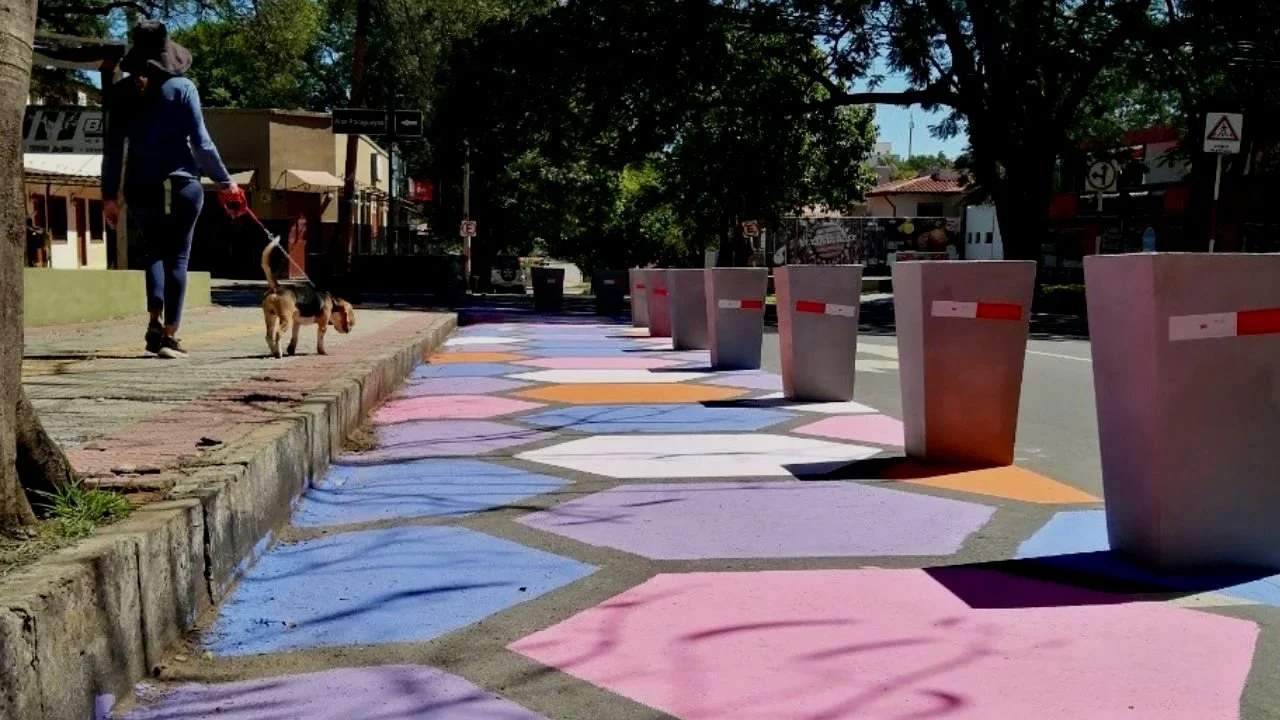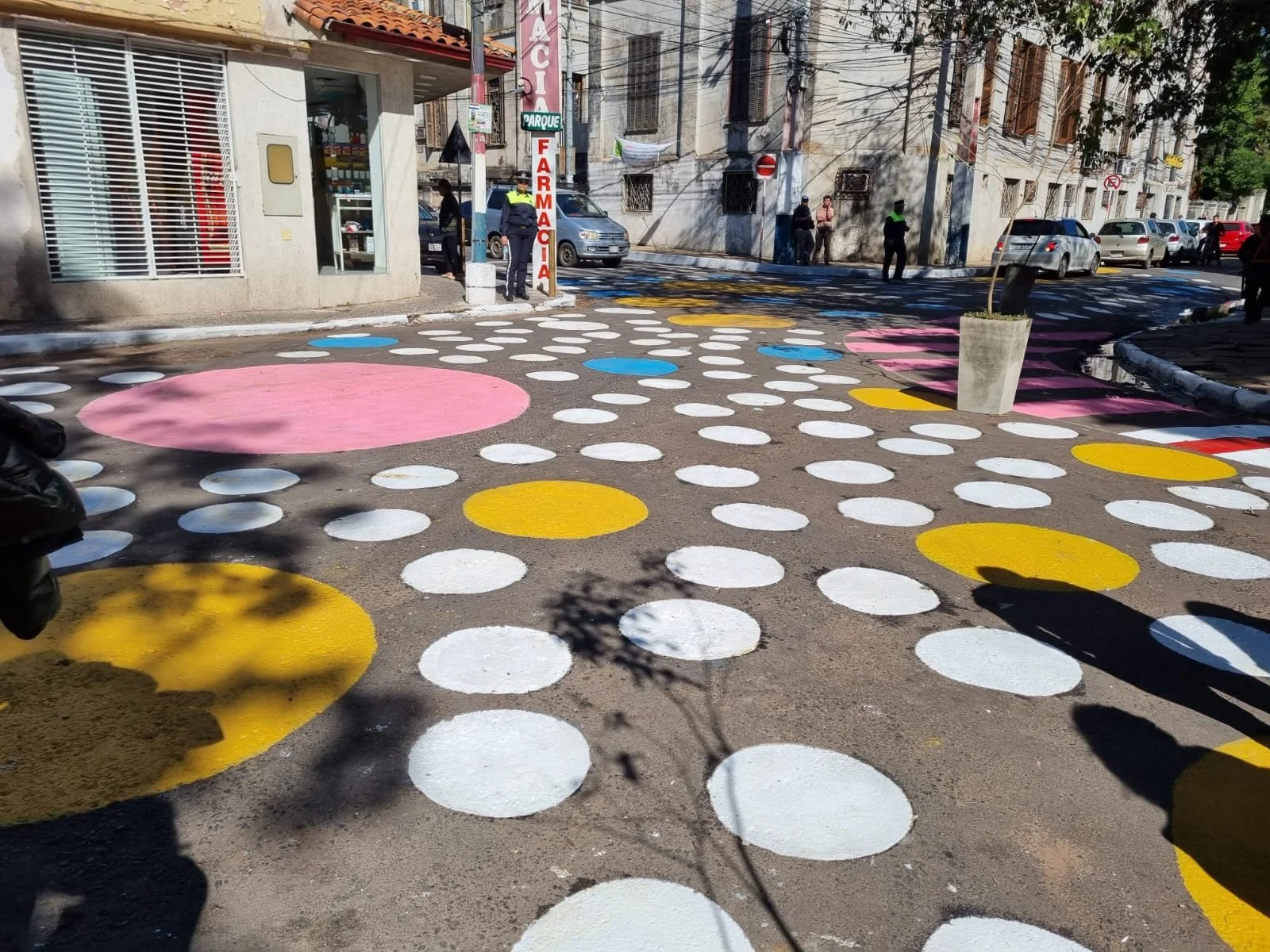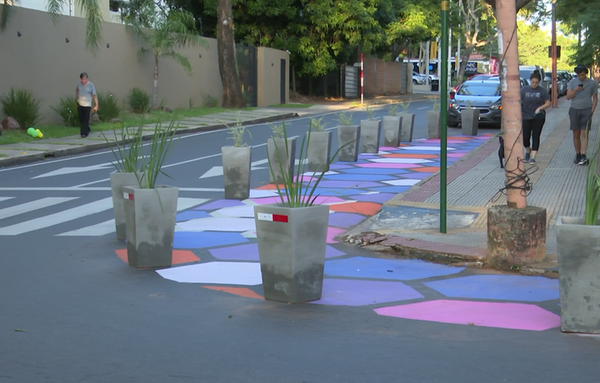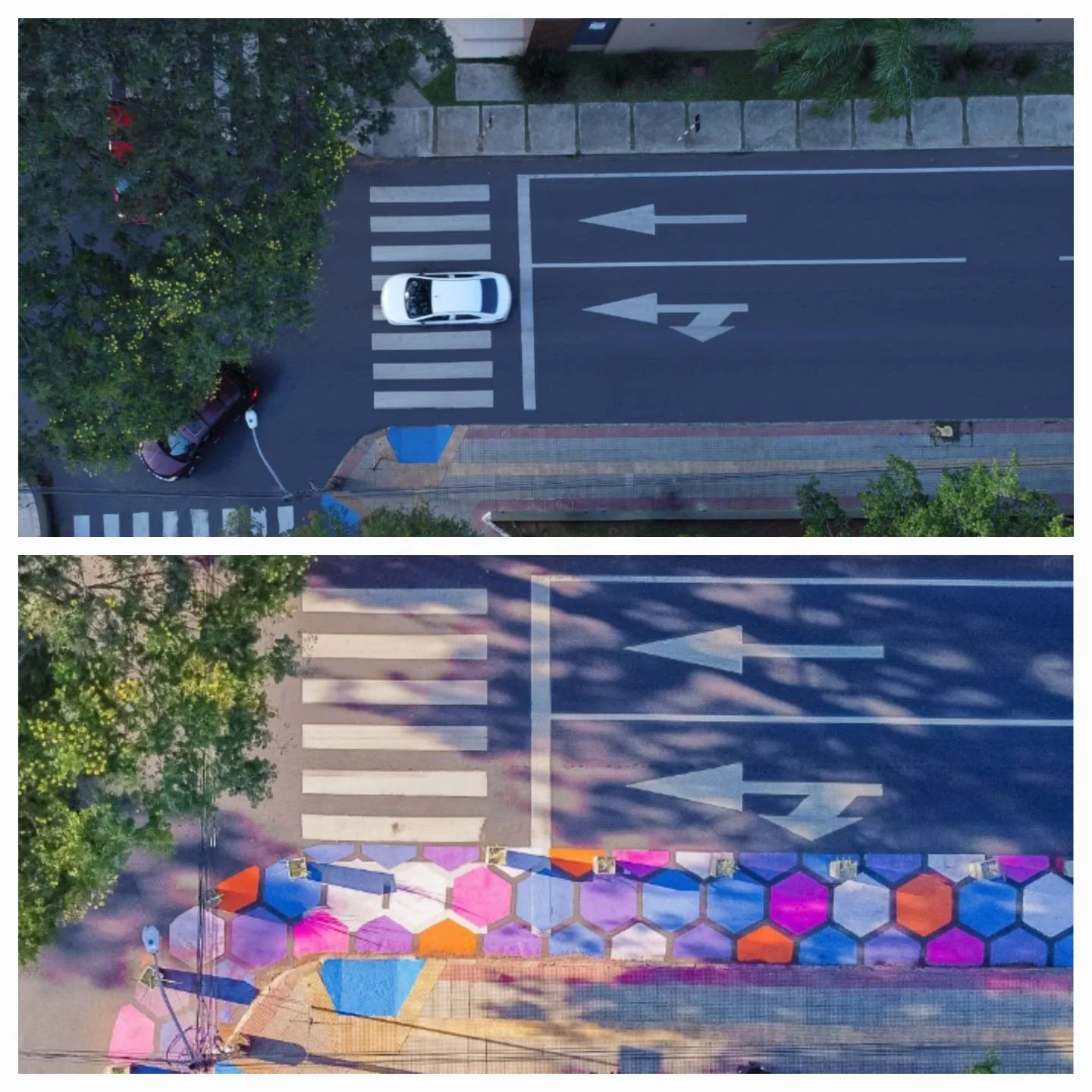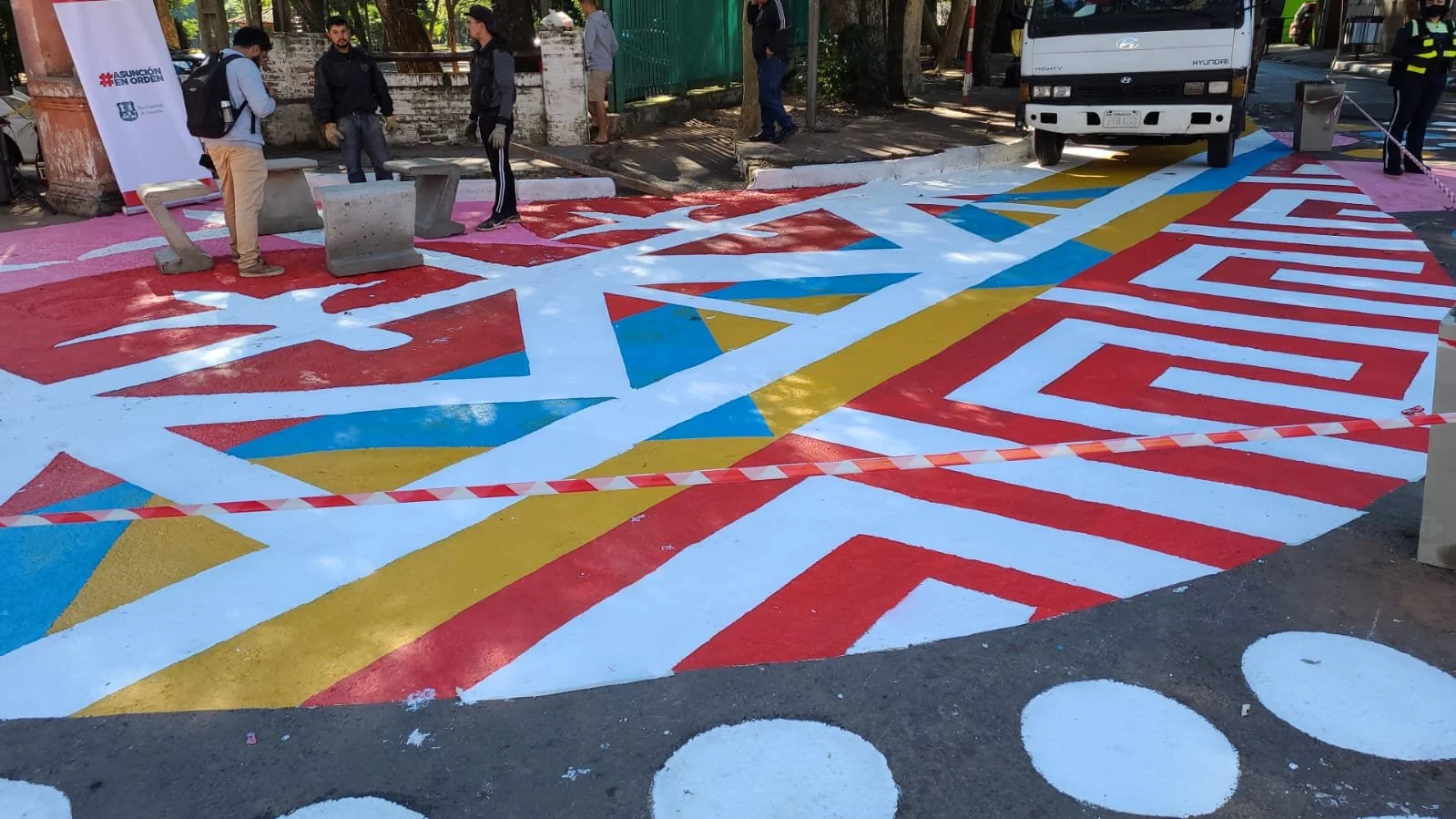Credit: This case study was kindly provided by the GEF and UNEP, as part of the GEF-6 programme.
Tactical urbanism to design cities for people in AsunciÓn, Paraguay
Peaceful coexistence between cars and pedestrians is at risk in the city of Asunción. Because of numerous cars entering the city every day, sustainable modes of transportation are not used by local populations. The Asunción Green City project planned to introduce interim tactical urbanism interventions to increase road safety and citizen participation through an urbanism contest. Three areas of interventions were designated, and experts and public could vote for the presented projects. The winning projects successfully reached the reducing vehicular speed and the walkability of streets goals. Neighbours’ involvement from the start of the project ensured a good unfolding of the project, as citizens felt included and valued. Thanks to the success of this project, new contests will be open in school zones, with the cooperation of UNICEF, the Ministry of Urbanism, Housing and Habitat.
key actors and partners
The Asunción Green City project oversaw the organization of the project. Each area of intervention selected in Asunción, Fernando de la Mora and Ñemby were picked by the transit directors of these municipalities, with the support of the Ministry of Urbanism, Housing and Habitat, UNDP and the National Agency for Transit and Road Safety.
The Asunción Green City is also collaborating with UNICEF and the Ministry of Urbanism, Housing and Habitat to develop future projects.
Intervention on a street of Asunción. Source: UNDP
Project and process overview
Due to the too strong presence of cars, road safety became an issue in the cities of Asunción, Fernando de la Mora and Ñemby. It is estimated that around 600,000 motored vehicles enter the city of Asunción each day, adding a lot of pressure to the already dense traffic. The car-centric design of these cities makes urban mobility uncomfortable and less safe for pedestrians, as well as unfriendly towards more sustainable modes of transportation like bicycles. Interim tactical urbanism interventions can work to increase road safety and promote citizen participation.
To that end, a tactical urbanism contest called Calle.Idea was open to the public, organized by the Asunción Green City project. The contest aimed to improve the management of urban, vehicular and pedestrian traffic, through interim interventions implemented in specific crossings in Asunción, Fernando de la Mora and Ñemby. The focus areas were selected by the transit directors in each municipality, with support from experts from the Ministry of Urbanism, Housing and Habitat, UNDP and the National Agency for Transit and Road Safety. Winning projects were chosen by a jury of experts, as well as the popular vote. All projects that participated were based on human-centred design and promoted citizen participation as well as the use of sustainable means of mobility.
Intervention in plaza de Asunción. Source: Gentileza
The selection criteria for the contest were:
Generate safer environments for citizens: protect pedestrians, strengthen public spaces.
Channel vehicular traffic: mark traffic lines on the ground or include more traffic signs.
Slow vehicular traffic: reduce speeds.
Promote road safety: increase driver education and raise awareness towards pedestrian safety.
Consider public transport: improve circulation and safety by creating docks.
Promote the appropriation of public spaces currently occupied by vehicles: focus on empowering the general public, introduce furniture and paintings to protect the newly created spaces, make a more walkable city, promote the use of alternative means of transportation such as cycling.
In total, seven projects won the contest, including the TAPE POTY and the BARRIO DEL PARQUE projects in the city of Asunción.
The winning interventions implemented in the city of Asunción include artistic paintings, traffic signs, better lighting, cement benches, landscaping with native species, segregated trash cans and improved sidewalks. The initiatives aimed to reduce the speed of cars at intersections, to increase the safety of pedestrians and cyclists who circulate in the area, creating spaces such as docks at corners, near crosswalks and in park entrances.
More specifically, the TAPE POTY team worked with the neighbourhood commission to better understand and approach their needs and concerns, especially regarding the high vehicular speed. Neighbours were also consulted on what they most enjoyed about the area, in order to strengthen this aspect and use it as inspiration in the design.
« “We aimed to create a safe public space where pedestrians and bicycles can live in harmony with cars and buses, promoting not only road safety, but a connection to this large green area that is the Parque Caballero” »
Intervention on a street in Asunción. Source: UNDP
The BARRIO DEL PARQUE team carried out a data collection survey on their site. During the preparation period, they observed that approximately 500 pedestrians walked through the crossing each morning. The high-speed traffic generated a feeling of unsafety, so they included colourful docks adjacent to bus stops and included cement benches.
Results
Many insights can be gained from this project. Assessing the strengths and weaknesses of the interventions was possible almost in real time. A clear lesson learned about tactical urbanism interventions in general was the importance of the neighbours' involvement from the start. The areas selected for the initiatives in Asunción had a strong presence of neighbours’ commissions, as well as businesses and civil society organizations working on improving public spaces. In contrast, in Fernando de la Mora, early involvement of residents was less comprehensive, which caused disagreements and delays in the implementation
Crossing of Alas Paraguayas and Facundo Machain streets, before and after the implementation of the winning internvention of Calle.idea. Source: Tape Poty Team
« “Creating enjoyable public spaces, where traffic is organized better, contributes not only to road safety, but also to generate friendlier environments, were people have more empathy, more solidarity” »
Moreover, the seven tactical urbanism interventions winners of the Calle.Idea contest have proven that this type of innovative solutions is an excellent tool for bringing cities closer to their citizens in a more inclusive way. Finally, the experience with this contest has led the Asunción Green City project to seek and identify new opportunities to continue implementing similar initiatives, like a joint proposal, along with UNICEF and the Ministry of Urbanism, Housing and Habitat, to try to replicate the contest focused on school zones.
Lessons learnt
The project proposes a way of introducing sustainable mobility and increase road safety at local scale, thanks to human centred design.
The Calle.Idea contest engaged citizens in the decision making through participatory processes. This initiative increased citizens involvement in the implementation of the project, allowing them to feel empowered in the management of their neighbourhoods.
Finally, by reducing vehicular speed and implementing artistic paintings, better lightning, benches, landscaping, segregated trash cans and improved sidewalks, inhabitants of the neighbourhoods can develop a stronger sense of community, as the improvements increase the well-being of the neighbourhoods’ inhabitants.
View of the entrance to Caballero Park after the implementation of the winning intervention of Calle.Idea. Source: El Barrio del Parque Team.
For more information on the project, please read about this case study here, and visit GEF website.

